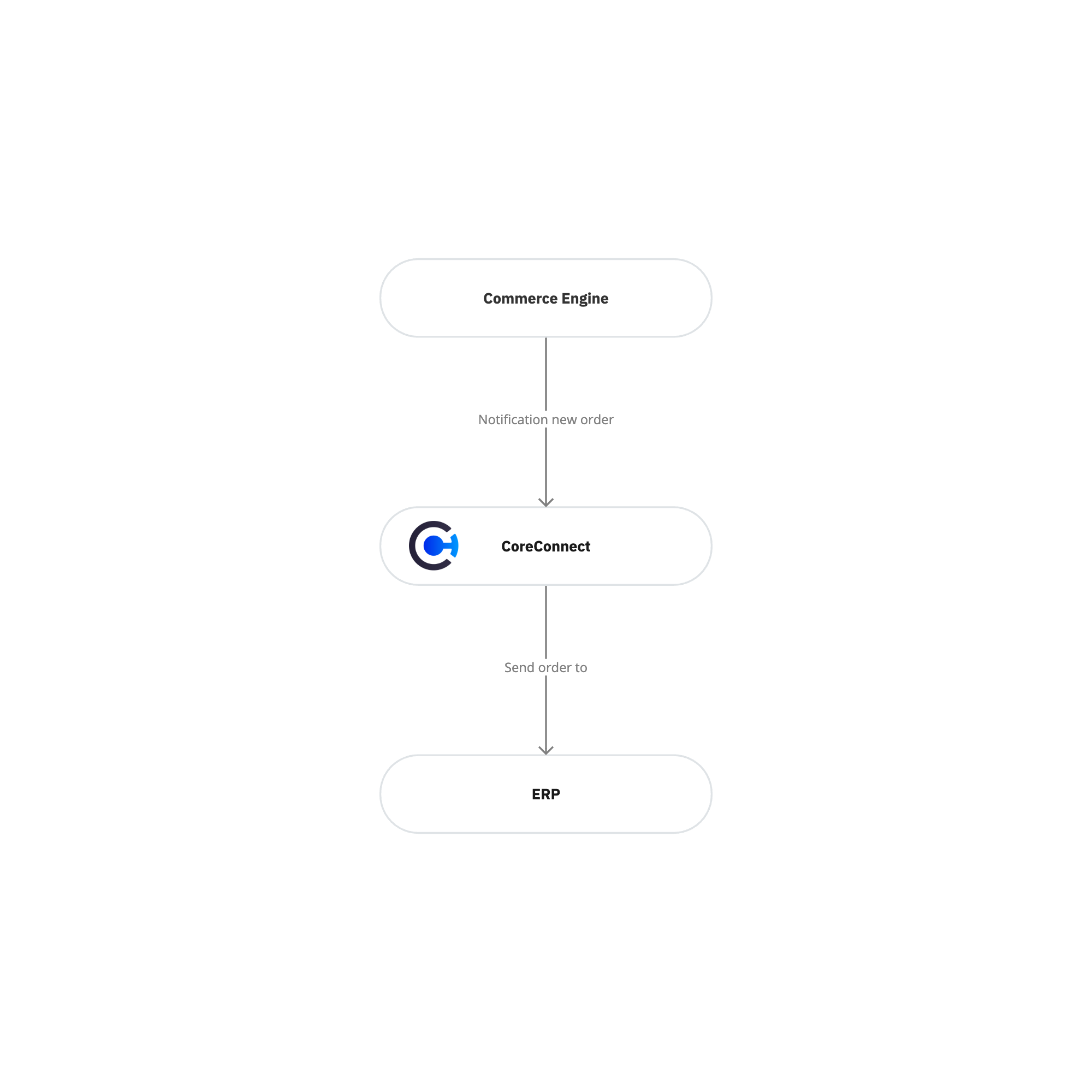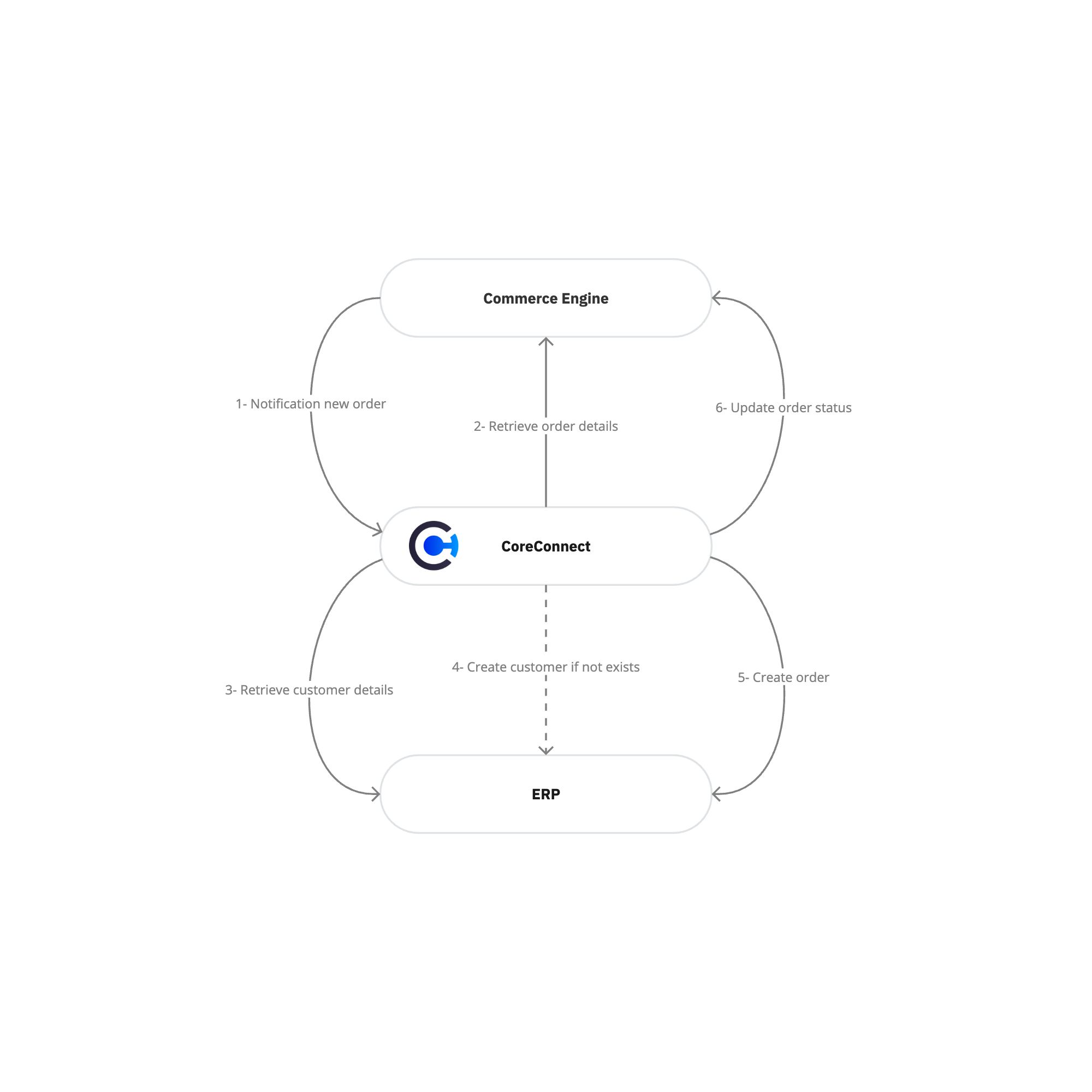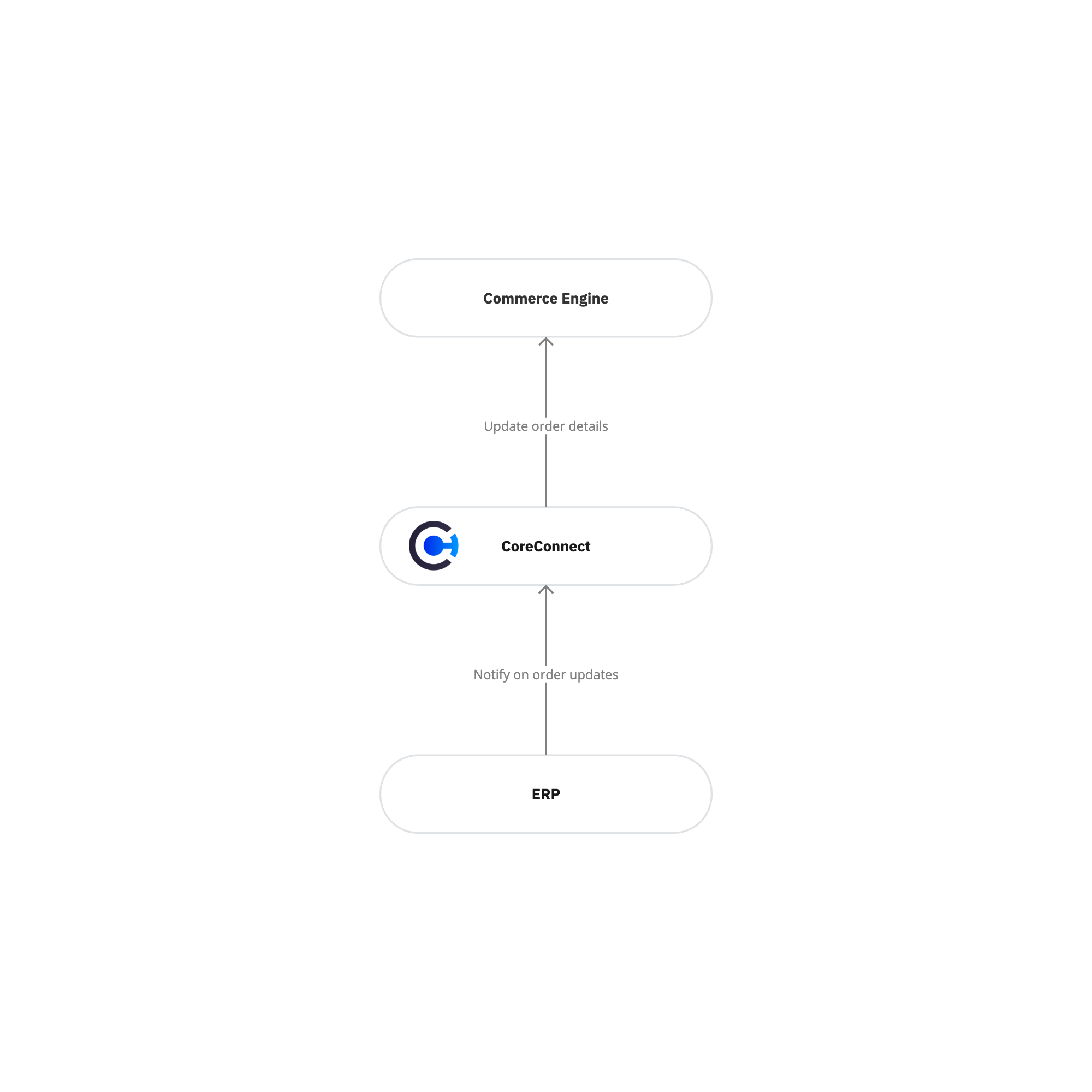Integrating ERP Order Processing
When a customer places an order in your online store, the journey of that order doesn’t stop at checkout. In this scenario, the next crucial step is to ensure that the order is processed further downstream precisely to your Enterprise Resource Planning (ERP) system, where inventory management, shipping, and invoicing occur. This recipe will guide you through integrating your Commerce Engine with an ERP system using CoreConnect, ensuring that orders flow smoothly from the storefront to fulfillment.
Let’s walk through how CoreConnect enables seamless order processing with an ERP system, focusing on managing orders from placement to delivery.
Setting the Context: What You Need to Know
In many e-commerce setups, once an order is placed, it needs to be processed by the ERP for fulfilment. The ERP typically handles stock updates, shipping arrangements, and order invoicing. In this scenario, the ERP is responsible for processing the orders, but in other cases, an Order Management System (OMS) may take this role. Regardless of which system takes the lead, the approach remains similar.
Before diving into the integration, here are a few key things to keep in mind:
- CoreConnect: The middleware that connects your Commerce Engine to the ERP system.
- ERP: Responsible for managing the order lifecycle, including order fulfillment, shipping, and invoicing.
- Commerce Engine: Handles the customer-facing order process, including placing and viewing orders.
The First Step: Processing Orders to the ERP
Once a customer places an order in your online store, the order needs to be processed in the ERP for fulfilment. CoreConnect is the glue between your Commerce Engine and ERP, ensuring the order is transferred seamlessly.
- Order Notification: When an order reaches a certain status (e.g., “Paid”) in the Commerce Engine, a notification is sent to CoreConnect. Depending on the functionality of your Commerce Engine, this can be set up through webhooks or subscriptions.
- CoreConnect Retrieves Order: CoreConnect then retrieves the order details from the Commerce Engine, such as customer information, order items, and shipping preferences.
- Sending the Order to ERP: Finally, CoreConnect forwards the order to the ERP, where it can be processed for fulfillment.
This simple yet crucial process ensures that your ERP receives the necessary information to manage the order.

While the above diagram simplifies the process, in reality, things can get more complex. For example, CoreConnect might need to check if the customer already exists in the ERP system. If the customer doesn’t exist, CoreConnect will create a new customer record before sending the order.
Checking and Creating Customers in the ERP
When processing orders, the ERP needs to know who the customer is. But what happens if the customer doesn’t yet exist in the ERP? CoreConnect has a solution for that as well.
- Customer Existence Check: CoreConnect checks if the customer already exists in the ERP before sending the order to the ERP.
- Customer Creation: If the customer doesn’t exist, CoreConnect will create a new customer record in the ERP with all the necessary information (e.g., name, address, contact details).
- Sending the Order: Once the customer is created, the order is processed and sent to the ERP for further handling.

By ensuring the customer exists in the ERP, you avoid issues arising from mismatched or missing customer records, keeping everything in sync between systems.
The Next Phase: Processing Order Status Updates from the ERP
Once the order is in the ERP, the fulfilment process begins. This might involve picking and packing the order in a warehouse, updating stock levels, preparing shipments, and eventually delivering the product to the customer. But your job isn’t done yet—these updates need to be communicated back to the Commerce Engine and, ultimately, the customer.
- Order Status Updates in ERP: As the order progresses through fulfilment (e.g., from “Confirmed” to “Shipped”), the ERP tracks the changes.
- Syncing with Commerce Engine: CoreConnect listens for updates from the ERP and ensures that any relevant order status changes are reflected back in the Commerce Engine. This can either be done by Webhooks sent by the ERP or by CoreConnects regularly synchronizing the ERP and Commerce Engine.
- Notifying the Customer: Once the status is updated in the Commerce Engine, the customer can be notified, and any necessary information—like a tracking link—is shared to them.
This integration keeps your customers informed and helps ensure that other systems connected to the Commerce Engine (such as a customer service portal) are up to date with the latest order information.
Examples of Updates:
- Shipment tracking numbers
- Shipping status (e.g., “Shipped”, “Out for Delivery”, “Delivered”)

Wrapping It Up: What Comes Next
Now that your Commerce Engine is integrated with your ERP system, you’ve streamlined the order fulfillment process. Orders are automatically transferred from the storefront to the ERP, status updates flow back to the customer, and your business can focus on growth rather than manual data entry.
With this integration, you can now explore further possibilities—such as handling order cancelations and returns.
CoreConnect continues to act as the bridge between your systems, ensuring everything stays connected and running smoothly.